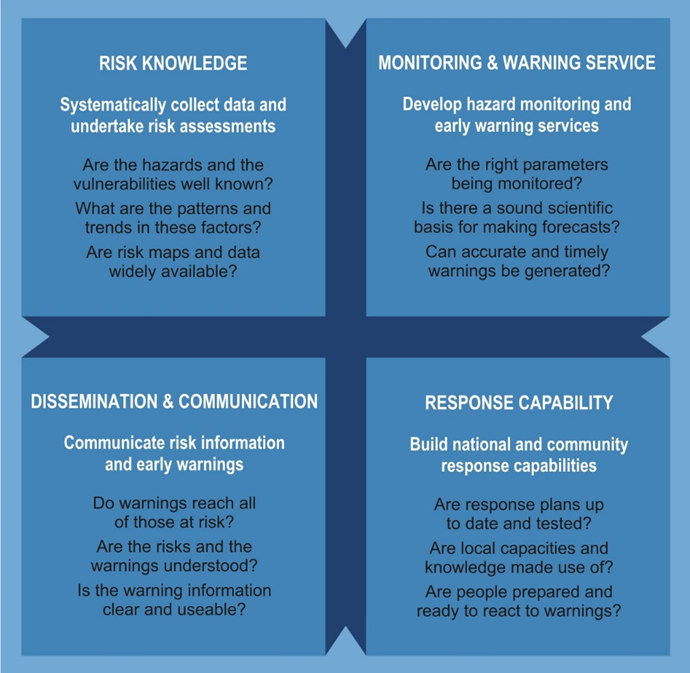
Disaster Management Manual
A manual for practitioners and decision makers!

Disaster Management Manual
A manual for practitioners and decision makers!
It is important to provide road users with early warning information about disasters. Adequate early warning information can increase public awareness of disasters and prevent loss of life and reduce the economic and material impact of disasters through proactive disaster preparedness and post-disaster recovery efforts. For early warning systems to be effective, they must actively engage communities at risk, promote public education and awareness of risks, effectively spread messages and warnings, and ensure that they are always ready. Particularly in recent years, as disasters due to extreme weather events tend to be more severe and widespread, efforts are being made to develop early warning information as a means of maximizing the use of existing road infrastructure to reduce disasters, in addition to organizing disaster-resistant road infrastructure.
Early warning information provision currently includes those for floods, earthquakes, avalanches, tsunamis, tornadoes, landslides, and droughts. Some of the road authorities provide their own early warning systems for specific disasters listed above. The objectives of early warning information provision can be divided into two categories: damage deterrence and damage impact reduction 1.
The purpose of damage suppression is to minimize the occurrence of disasters by providing information on the possibility of disaster occurrence in advance and preparing for it. This includes rainfall information and typhoon forecasts. On the other hand, "damage impact reduction" is to prepare for the damage that has occurred in order to cope with the situation and reduce the impact of the disaster afterward. It corresponds to the damage prediction immediately after the earthquake. It is desirable to provide both types of early warning information, but it is necessary to consider providing information according to the situation in each country.
An early warning information system is "an integrated set of systems and processes for hazard monitoring, forecasting and prediction, disaster risk assessment, communication, and preparedness activities that enable individuals, communities, governments, and businesses to take timely action to reduce disaster risk in advance of a hazardous event” 2.
In 2003, experts taking part in the 2nd International Early Warning Conference 3 introduced the current concept of efficient or people-centered early warning systems based on four elements:
This concept is shown in Figure 3.4-1. 4
In this section, early warning information systems implemented in the road sector are introduced.
